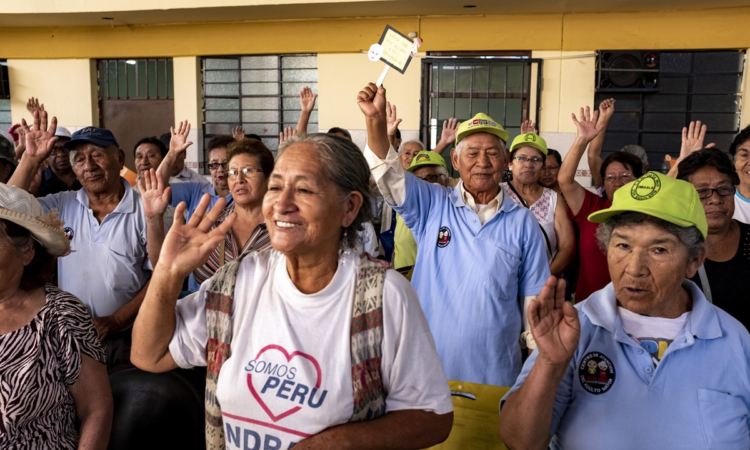
Key facts
Human rights are enshrined in human rights instruments. All WHO Member States have ratified at least one international human rights treaty that includes the right to the highest attainable standard of health. After ratifying a treaty, a country has a legal obligation to protect and fulfil the rights recognized in the treaty. To deliver on binding human rights commitments countries need to adopt a human rights-based approach to health.
The right to the highest attainable standard of physical and mental health is enshrined in several international legal instruments including the International Covenant on Economic, Social and Cultural Rights. It includes freedoms and entitlements. Freedoms include the right to control one’s health and body (for example, sexual and reproductive rights) and to be free from interference (for example, free from torture and non-consensual medical treatment and experimentation, particularly relevant for persons with disabilities). Entitlements include the right to access quality health services without any discrimination.
A human rights-based approach to health commits countries to develop rights-compliant, effective, gender transformative, integrated, accountable health systems and implement other public health measures that improve the underlying determinants of health, like access to water and sanitation.
This means countries must ensure legislation and health policies and programmes respect and advance the realization of human rights. Research shows that proactive measures to comply with human rights obligations help countries improve substantive equality and build resilience to shocks. For example, applying a human rights framework to reproductive health can help us identify how preventable maternal mortality and morbidity results from a variety of human rights violations including discrimination and lack of access to quality health services.
A human rights-based approach (HRBA) requires mainstreaming fundamental human rights principles and standards across health services and health system policies, including public health emergency preparation and responses. They include:
Non-discrimination and equality: This requires prioritizing the needs of those furthest behind to achieve equity. Equity is used as a framework in public health to identify and address unfair and
remediable health disparities among different sub-populations. HRBA provides legal standards and obligations to put legal protections for equality and non-discrimination into action.
Addressing discrimination requires attention to overlapping and intersecting factors of discrimination notably gender, race, ethnicity, disability, sexual orientation, gender identity and socioeconomic status. An intersectional lens allows for the examination of health inequalities driven by multiple grounds of exclusion and for health interventions to be designed in a way that responds to intersecting factors. This would include, for example, ensuring that health information is provided in formats that allow people to access the information they need.
Participation: Participation requires empowering health service users, communities and civil society to engage in planning, decision-making and implementation processes for health across the programme cycle and at all levels of the system. To be meaningful, participation must include explicit strategies to address power imbalances, value experiential evidence, and manage conflicts of interest so that the needs and expectations of people are met. Participatory planning techniques can be used to engage beneficiary populations in designing health services or public spending prioritization.
Accountability: Countries must establish accessible and effective accountability mechanisms. These may include administrative and judicial remedies and oversight by other institutions, such as national human rights institutions and health and social care regulators. The United Nations human rights mechanisms, including the Committee on Economic Social and Cultural Rights, play a crucial accountability role by regularly reviewing countries’ compliance with their health-related human rights obligations.
There is a growing recognition of the importance of regulation of non-State actors, such as the private sector and non-governmental organizations, to ensure they respect and protect human rights. For example, by enacting bans on tobacco advertising, promotion and sponsorship (TAPS), countries are implementing their commitments to manage tobacco control under the WHO Framework Convention on Tobacco Control. One third of countries (66), representing a quarter of the world’s population, have completely banned all forms of TAPS.
Some human rights obligations are of immediate effect, such as the guarantee of non-discrimination. Other components of the right to health, like access to cutting edge health technology, are subject to the principle of progressive realization. Countries are legally obliged to use the maximum available resources to develop and implement rights-based legislation, policies and programmes. Countries in a position to assist have an obligation to cooperate with those with fewer resources.
The right to health includes 4 essential, interrelated elements: availability, accessibility, acceptability and quality.
Availability refers to the need for a sufficient quantity of functioning health facilities, goods and services for all. Availability can be measured through the analysis of disaggregated data to different stratifiers including by age, sex, location and socio-economic status and qualitative surveys to understand coverage gaps.
Accessibility requires that health facilities, goods, and services must be accessible to everyone. Accessibility has four dimensions: non-discrimination, physical accessibility, economic accessibility (affordability) and information accessibility. This is particularly important for persons with disabilities who often encounter significant barriers to health related to the inaccessibility of services, facilities and health information.
Assessing accessibility requires analysis of physical, geographical, financial and other barriers to health systems and services, and how they may affect people who are marginalized. It requires the establishment or application of clear norms and standards in both law and policy to address these barriers.
Acceptability relates to respect for medical ethics, culturally appropriate, and sensitivity to gender. Acceptability requires that health facilities, goods, services and programmes are people-centred and cater to the specific needs of diverse population groups and in accordance with international standards of medical ethics for confidentiality and informed consent.
Quality extends to the underlying determinants of health, for example safe and potable water and sanitation as well as requiring that health facilities, goods, and services are scientifically and medically approved.
Quality is a key component of universal health coverage (UHC). Quality health services should be:
WHO supports countries to deliver on their human rights commitment to ensure non-discriminatory access to effective, quality health services and the underlying determinants of health. To achieve this goal WHO:
Related
Related health topics
News
Fact sheets







